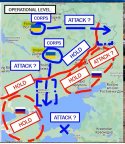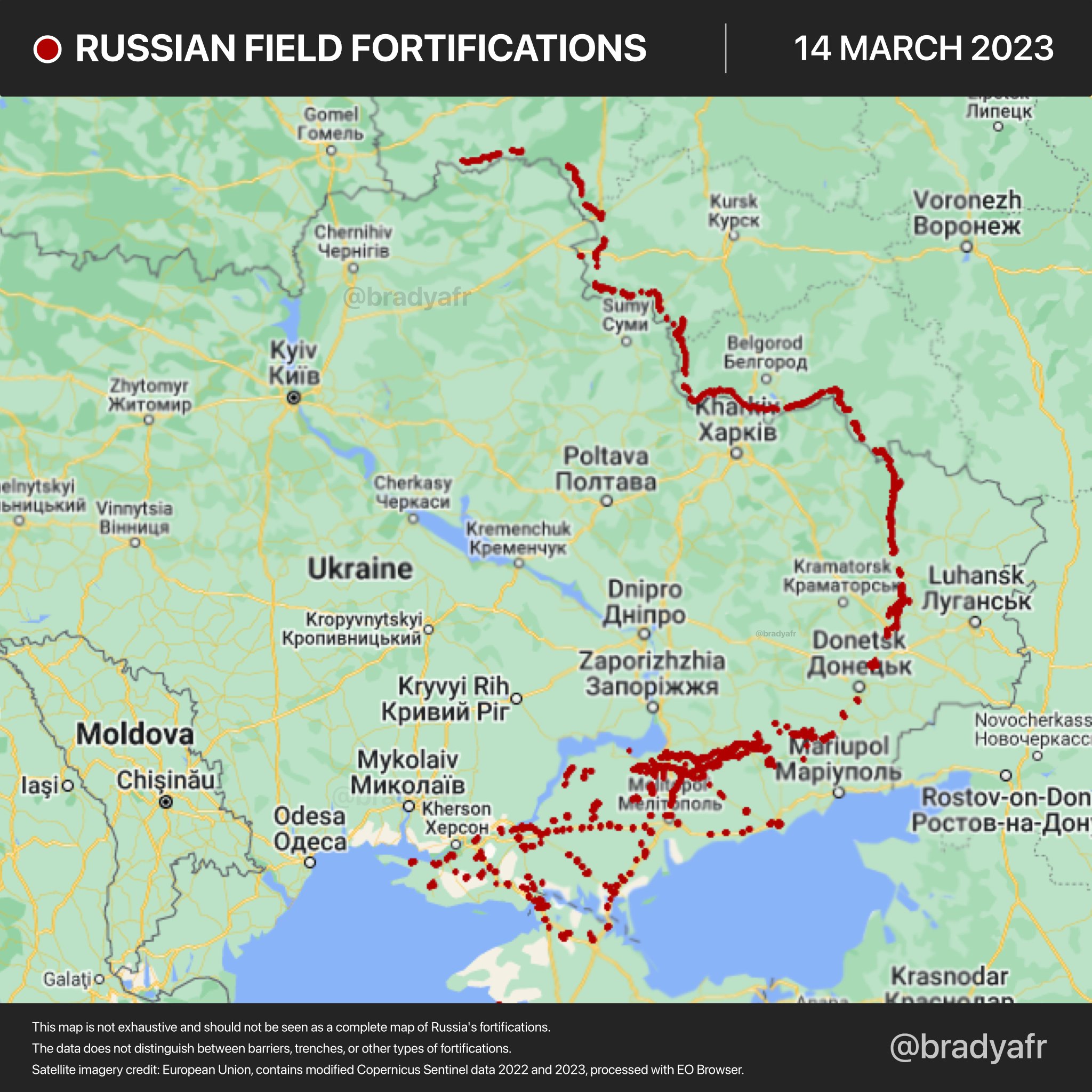According to M. Koffman, Ukraine is in the process of building 3 army corps that will play an important role in the upcoming offensive.
Three army corps would require a minimum of six brigades as that term is not applied to a single brigade with reinforcing units. Two brigades is a minimum although three is preferable. This would match what Zaluzhniy said a few months earlier about equipment requirements. I calculated that they matched roughly six brigades by pre-war TOE. As they are mostly equipped with NATO vehicles they would probably be treated separately which explains the above.
Three corps indicate three directions but they don't necessarily have to be directions of attack. One may be kept in reserve for plugging gaps in defense. Two offensive directions is basic operations - as it forces the enemy to split forces not knowing where the main push will occur because battlefield success is largely unpredictable.
He talks of Ukrainian brigades being huge in size and capable of taking a lot of damage before losing cohesion and Ukrainians overall very capable at defense.
I don't have any information on changes to structure resulting from war so we have to assume that pre-war structure is still in effect possibly with small modifications.
Ukrainian ground forces had two types of units: mechanized brigades (including tank brigades) and motorized brigades.
(bde- brigade, bat. - battalion, coy - company)
Ukraine:
- mech bde - 3 mech bat. + 1 tank bat. + 1 inf. bat. (TerDef)
- tank bde - 3 tank bat. + 1 mech bat. + 1 inf. bat. (TerDef)
- mot bde - 3 inf. bat (TerDef) + 1 tank bat. (optional)
mech bat. - 3 mech coy + 1 tank coy
tank bat. - 3 tank coy + 1 mech coy
Nominally AFU tank companies should have 13 tanks and use NATO structure of 3 tank platoons of 4 tanks each. That change was being implemented before the war but it might have been reverted in some units due to training requirements and vehicle shortages. NATO structure is superior to Soviet/Russian structure of 10 tank companies of 3 platoons with 3 tanks as it allows much greater tactical flexibility and independence at platoon level.
The mechanized or infantry company had the same structure in both armies.
In any case Ukrainian mechanized or tank brigade was larger than a Russian equivalent with five larger battalions compared to three or four smaller battalions in Russian units.
Russians had only four battalions per unit and each had three companies of ten vehicles - tank or transpoter. The only exception are supporting battalions in brigades - tank in motor rifle brigades and motor rifle in tank brigades which had an additional fourth company. In regiments all battalions had three companies.
Russia:
- tank bde - 3 tank bat. (3x10) + 1 mot.r. bat. (4x10)
- tank rgt. - 3 tank bat. (3x10) + 1 mot.r. bat (3x10)
- mot.r. bde - 3 mot.r. bde (3x10) + 1 tank bat. (4x10)
- mot.r. rgt - 3 mot.r. bde (3x10) + 1 tank bat. (3x10)
Some Russian regiments had only three battalions (2+1). Some motor rifle regiments had two tank battalions and two motor rifle battalions. Those were present in motor rifle divisions that had no tank regiments.
Ukrainian motorized infantry brigades which operated with three infantry battalions before the war but those may have been expanded to four of five battalions to match the size of mechanized units. Territorial defense brigades are equivalent to motorized infantry brigades.
Ukrainian mechanized and tank battalions were also better prepared for fighting as independent battalion-sized tactical group as it has already both tank and infantry integrated as part of its base structure while Russians improvise the BTG as necessary which limits their effectiveness and largely makes continued operations impossible as the structure will be dismantled regardless of how it performs in combat.
On maps you can often see individual Ukrainian battalions operating separately from their mother unit. Conversely when you see a Russian brigade or regiment on a map it is usually a BTG deployed by said unit.
A separate issue is the Ukrainian Airborne Troops which had smaller structure of three airborne (motor infantry) battalions of three companies each and a single tank company that likely had the old 3x3+1 structure as it would only be used on brigade level as a single company. There was no concrete information on the structure so it is possible that they also had 14 tanks and NATO structure but the number of tanks assigned to Airborne didn't match it. However it didn't match companies of ten tanks either so it's really difficult to tell what went on there. Airborne is used as light infantry primarily and clips of combined arms (tank + infantry) operations by those units are rare.
He again criticized the Russian strategy of launching and sustaining 5 simultaneous offensive directions, as well as the general decision to launch the offensive in the first place. He argued that Surovikin probably wanted to receive the Ukrainian offensive first and then go on the offensive in summer with a much better reconstituted force. He sees the current Russian offensive as playing into Ukranian hands as it will result in marginal gains but leave Russian forces in a weakened state at the time Ukraine goes on the attack.
I haven't listened to the podcast so I don't know what his specific criticism was but Russian position is very difficult. These five directions are necessary for consolidation of the front and establishing a more or less consistent logistical framework that will enable both defense and offense. If Russia was to shift forces along the front to concentrate in any given direction then such maneuver could easily be either matched or exploited by Ukraine. In this war Russia does not enjoy information advantage and neither does it have geographical advantage because Russian forces have poor operational mobility. Thus ironically Ukraine's situation matches that old joke:
Commander we're surrounded!
Excellent! Now we can strike at any direction!
Which is absolutely true in tactical sense because this is precisely how breakouts happen. The surrounding force overstretches itself and the surrounded force risking destruction puts all potential into one section of the front. If it succeeds momentum carries and breakout is achieved. If not then fighting is ended anyway.
If Russia was to overstretch itself in its current state - manned by poorly trained conscripts and supported by a weak logistical network - it could easily lose one of the sections of the front.
- Druzhkivka-Svatove-Troitske
- Kreminna-Rubizhne-Severodonestk
- Volnovakha-Novotroitske-Dokuchayevsk(DPR)
- Tokmak-Melitopol
1. Cuts off supply lines for NE front and enables 2.
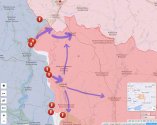
2. Splits front, threatens Popasna and Luhansk and enables 1.
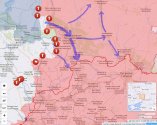
3. Threatens Donetsk/DPR and Mariupol and opens SE front.
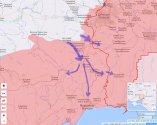
4. Obviously.
That Russia was concerned with such possibility indicates something about its position and perhaps not so much a military as a political one. The invasion and the war is a failure and that presents an opportunity for climbing of power hierarchies. Knives are out and are inconspicuously hidden behind the backs of players. What is rational on the battalefield is not rational if your aim is to climb a step up the political ladder. People in Moscow likely do not believe that there is a threat to Russia itself even in the aftermath of defeat in Ukraine. But a defeat there is an opportunity and people who partake in politics are there always and only for themselves. If they say otherwise they lie and you are a fool to believe them.
Where does Mr. Kofman gets these estimates than Russian casualties are higher than Ukrainians?
Sigh. Is there a point to making another explanation of basics if someone is
unwilling to acknowledge them?
If Ukraine was not maintaining advantageous casualty ratio then it would lose strength at other portions of the front in a visible manner since it has a smaller pool of available resources compared to Russia. The only reason why Ukraine is able to maintain defensive lines is because Russia is in a bad position and Ukraine is exploiting this by being aggressive on a tactical scale whenever possible. You see Russia being constantly on the offensive but that's because Russia is like a heavyweight on its back and trying to get up while Ukraine is a middleweight that's in mount and trying to hold on.
Withdrawal from Bakhmut would be advantageous to Ukraine as currently Russians are operating from reinforced and defensive positions. Having captured Bakhmut any pursuit or continued attack would put them in the open where they would be more vulnerable than they are currently.
All the data that is necessary to draw the conclusion is publicly available. The
ability to read the data is not. For that you have train yourself first. But it is all there. You only need time, will and discipline.
